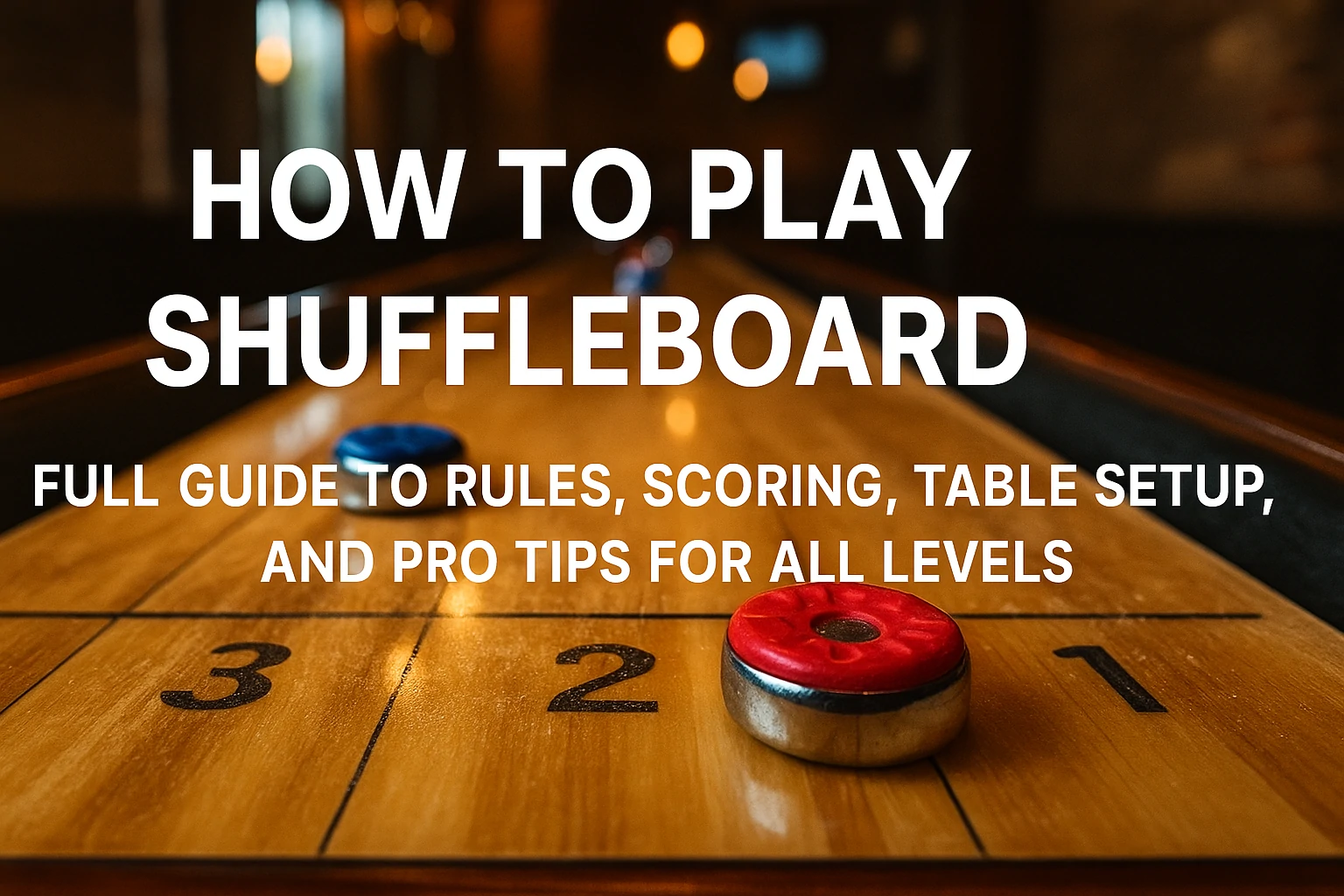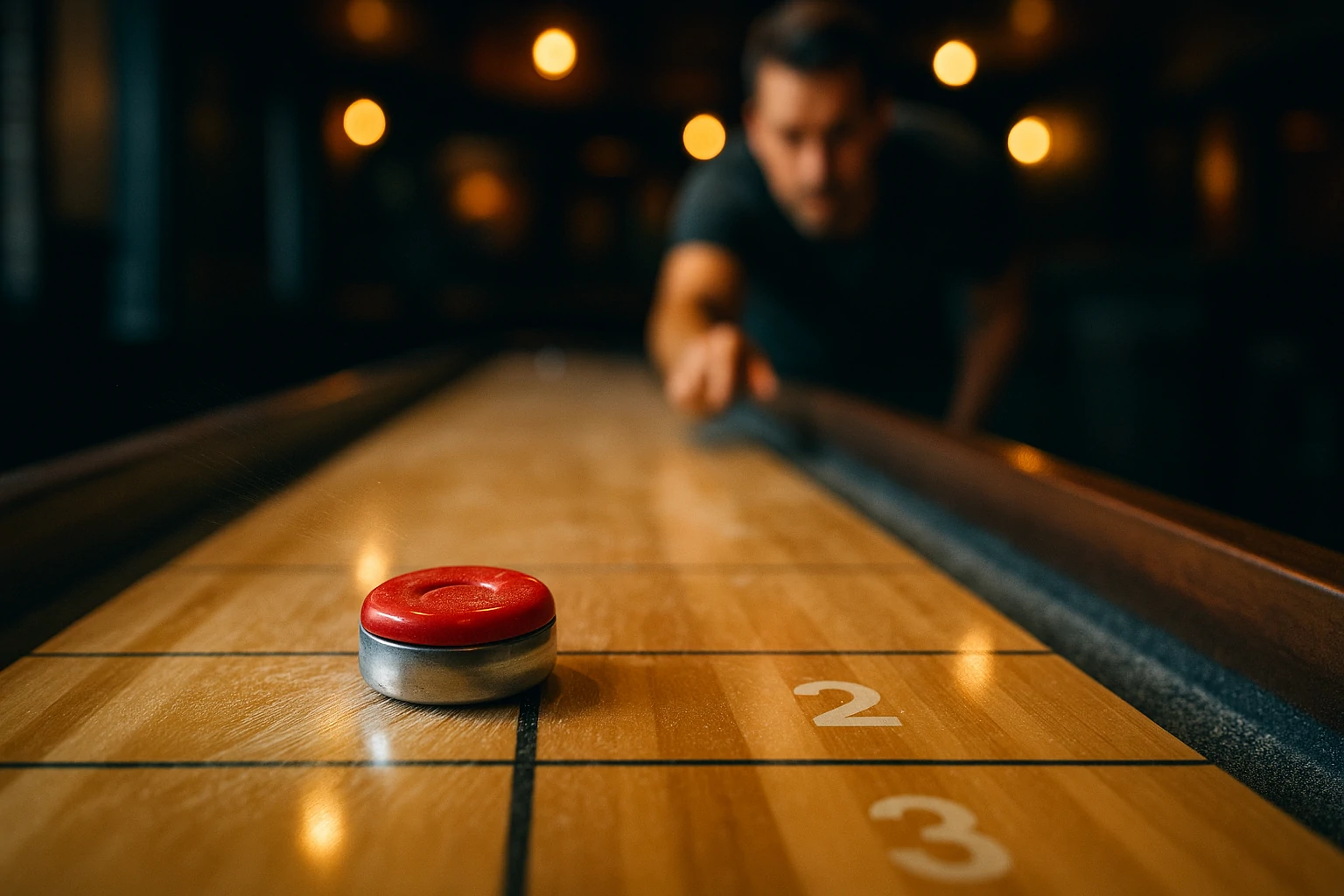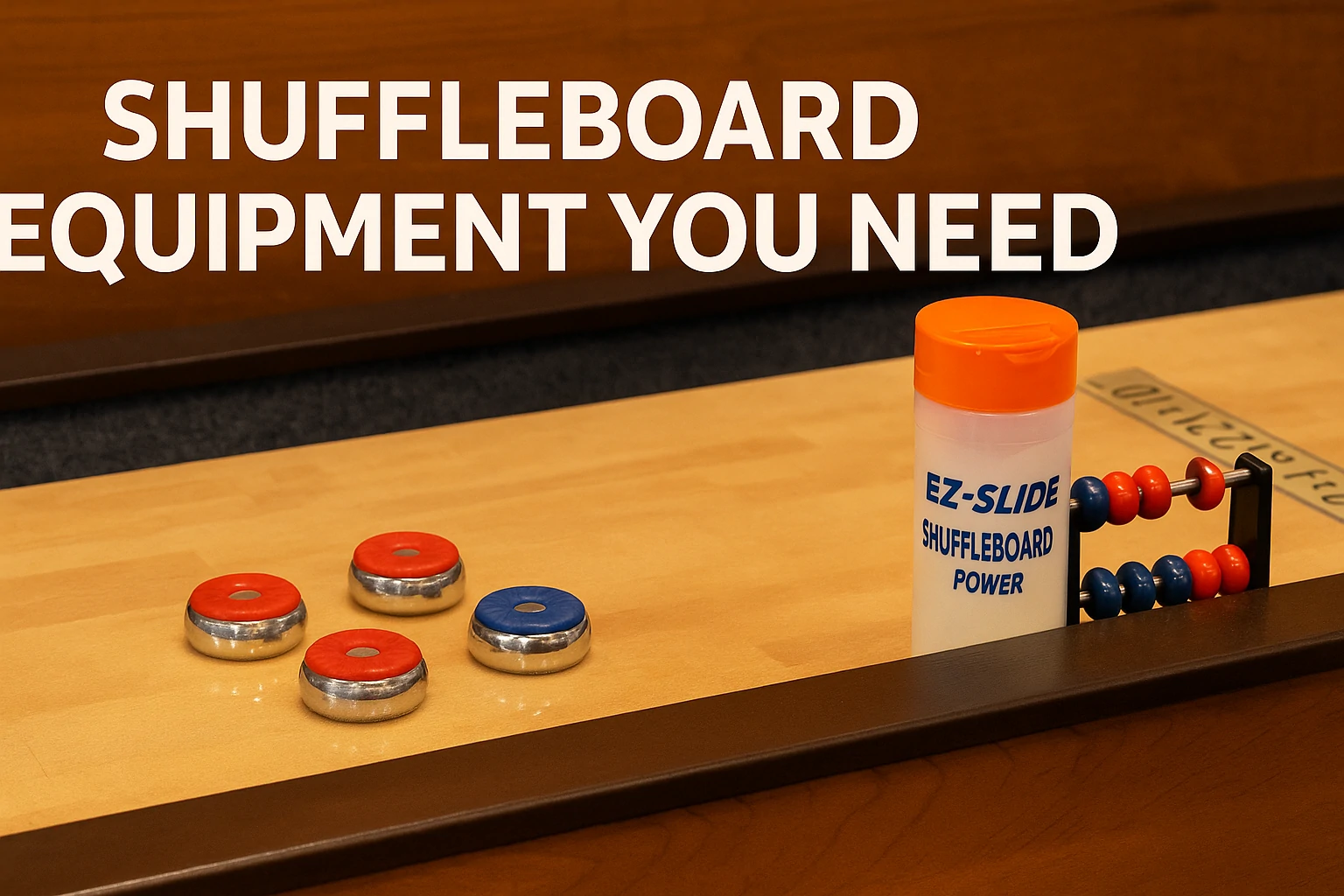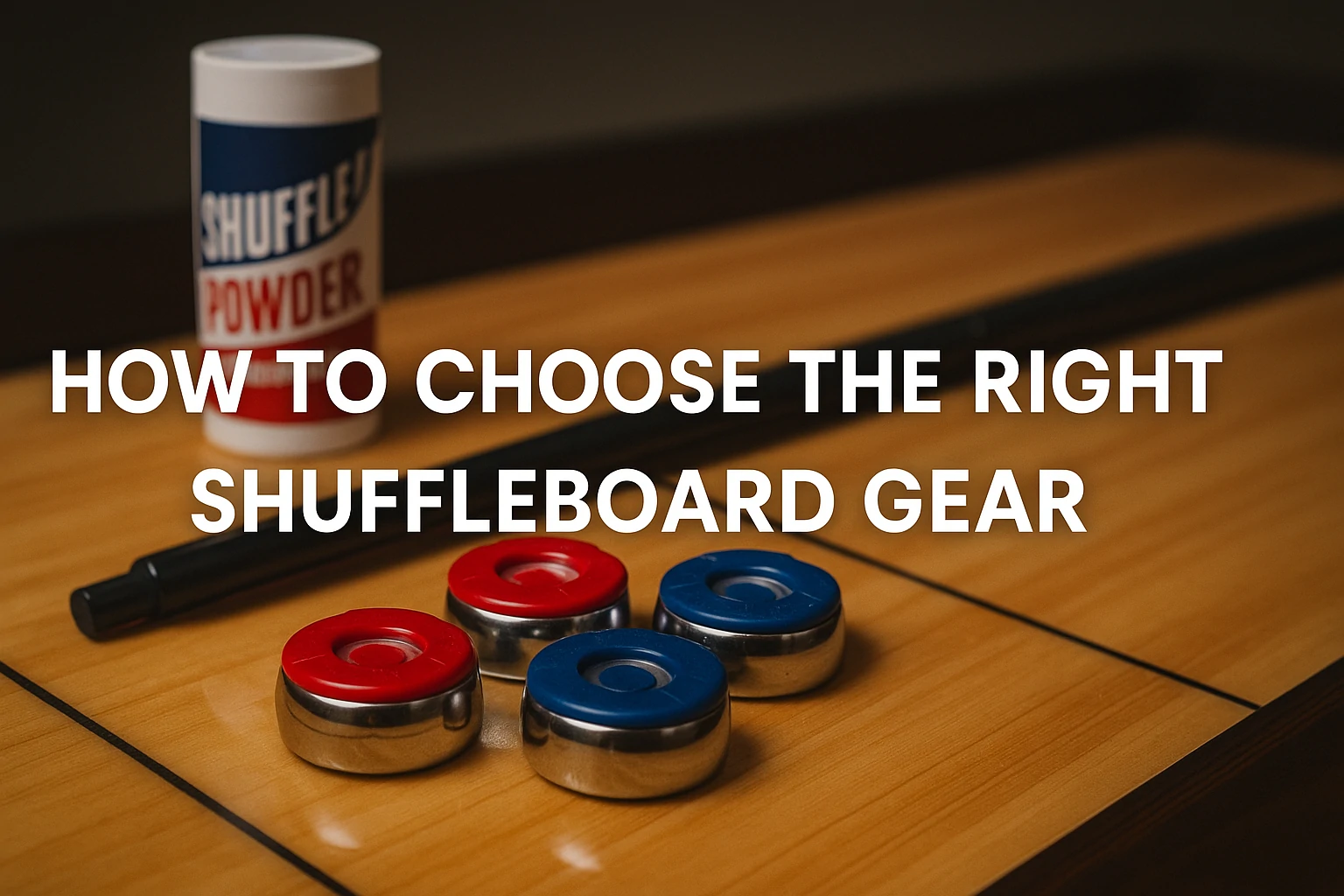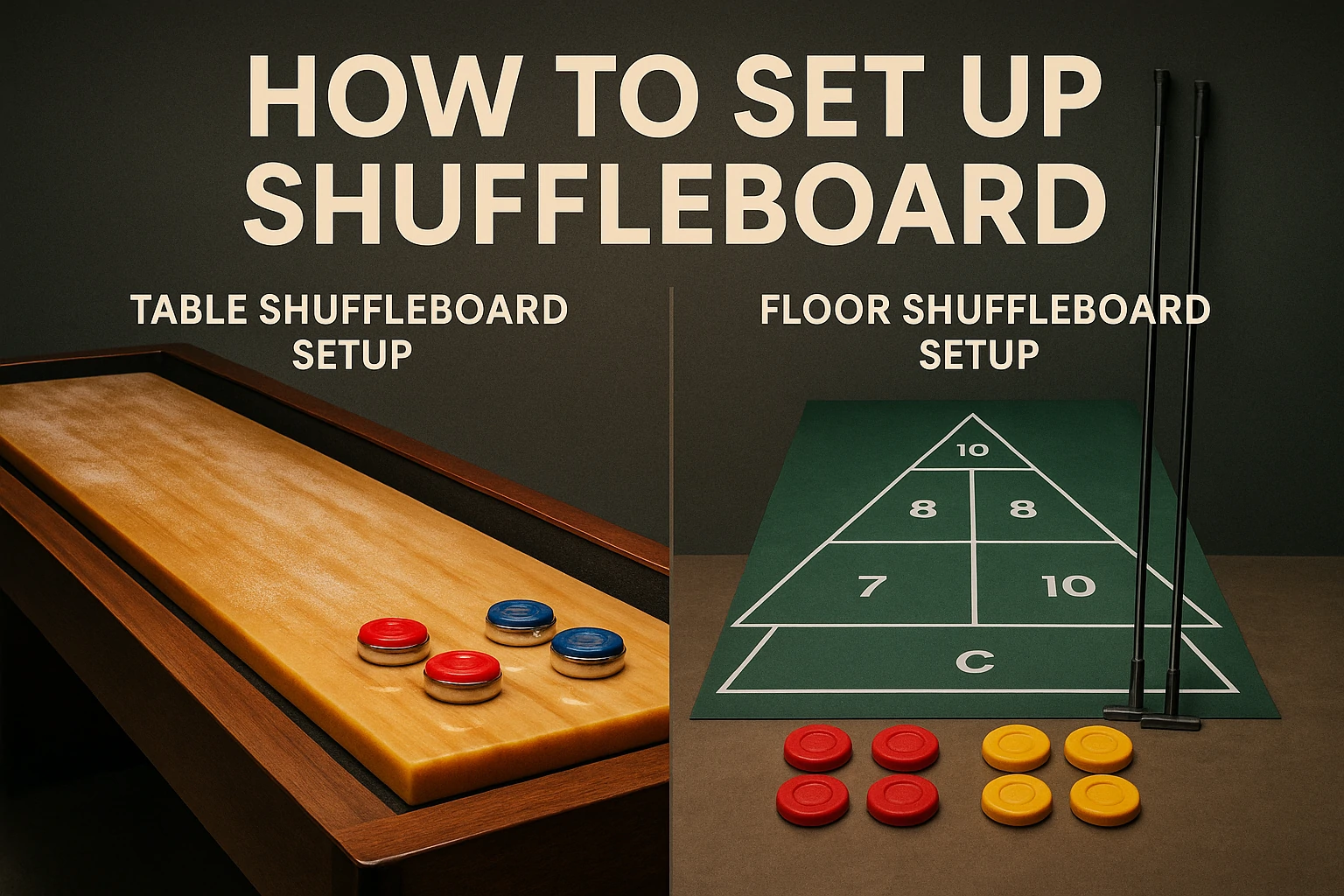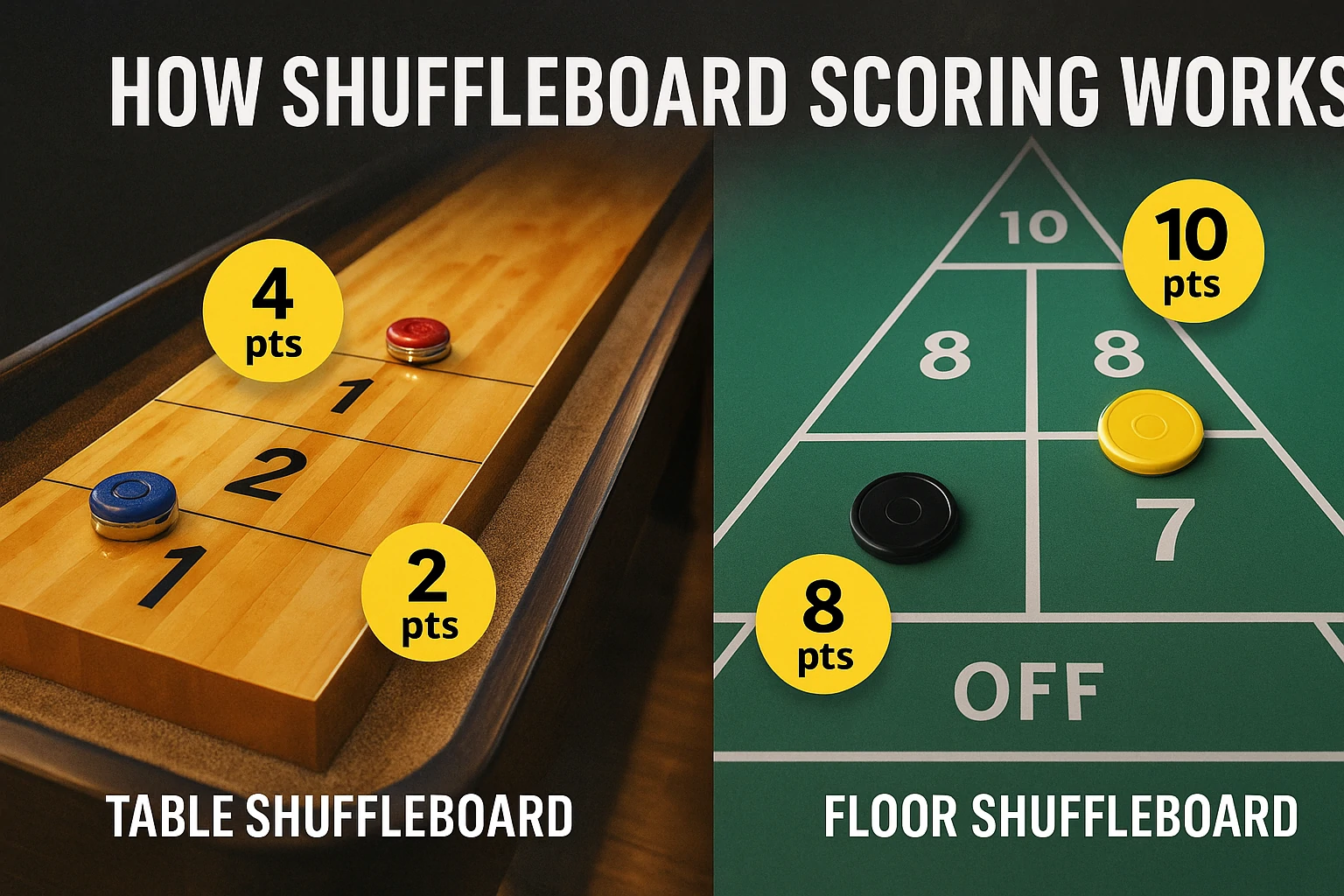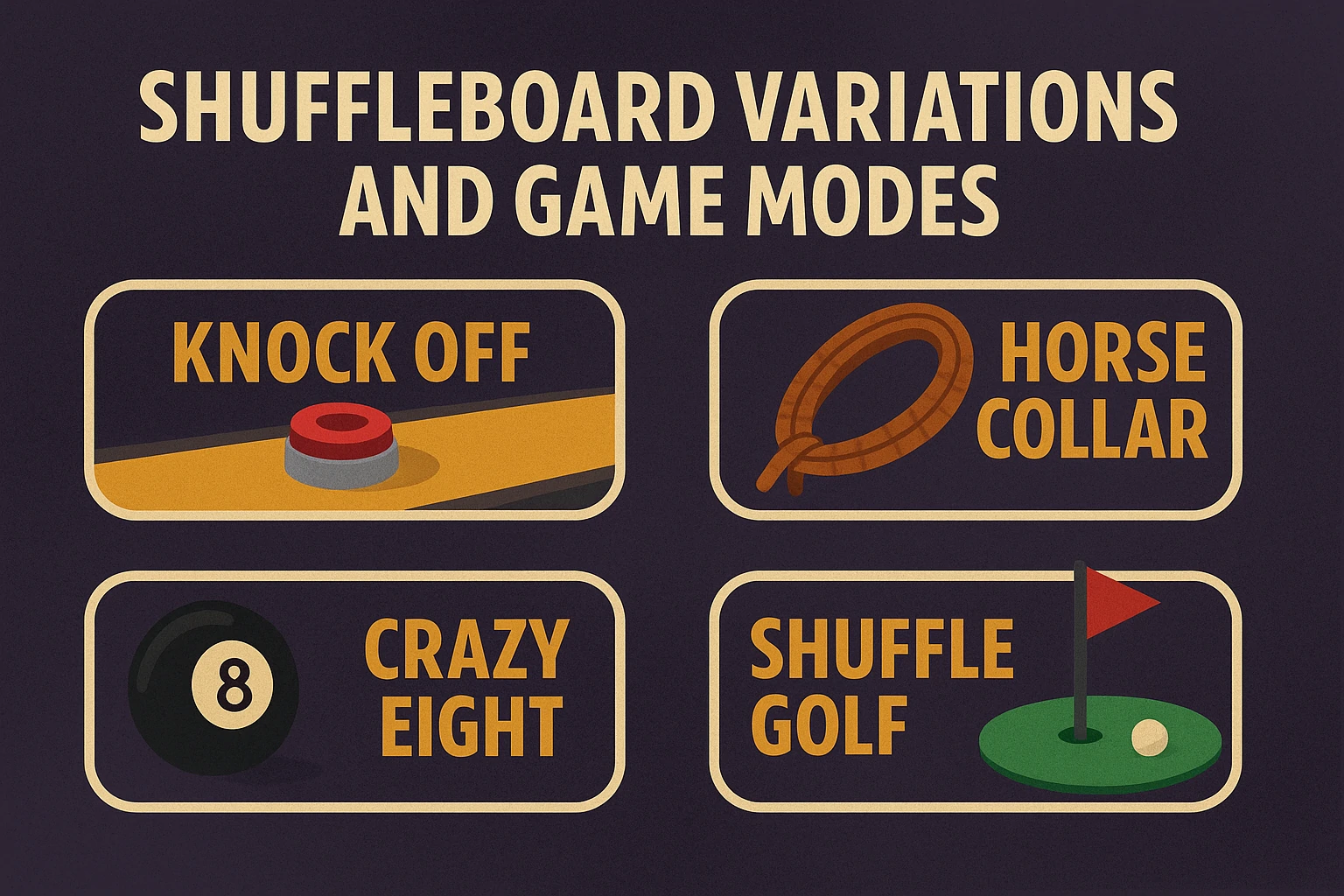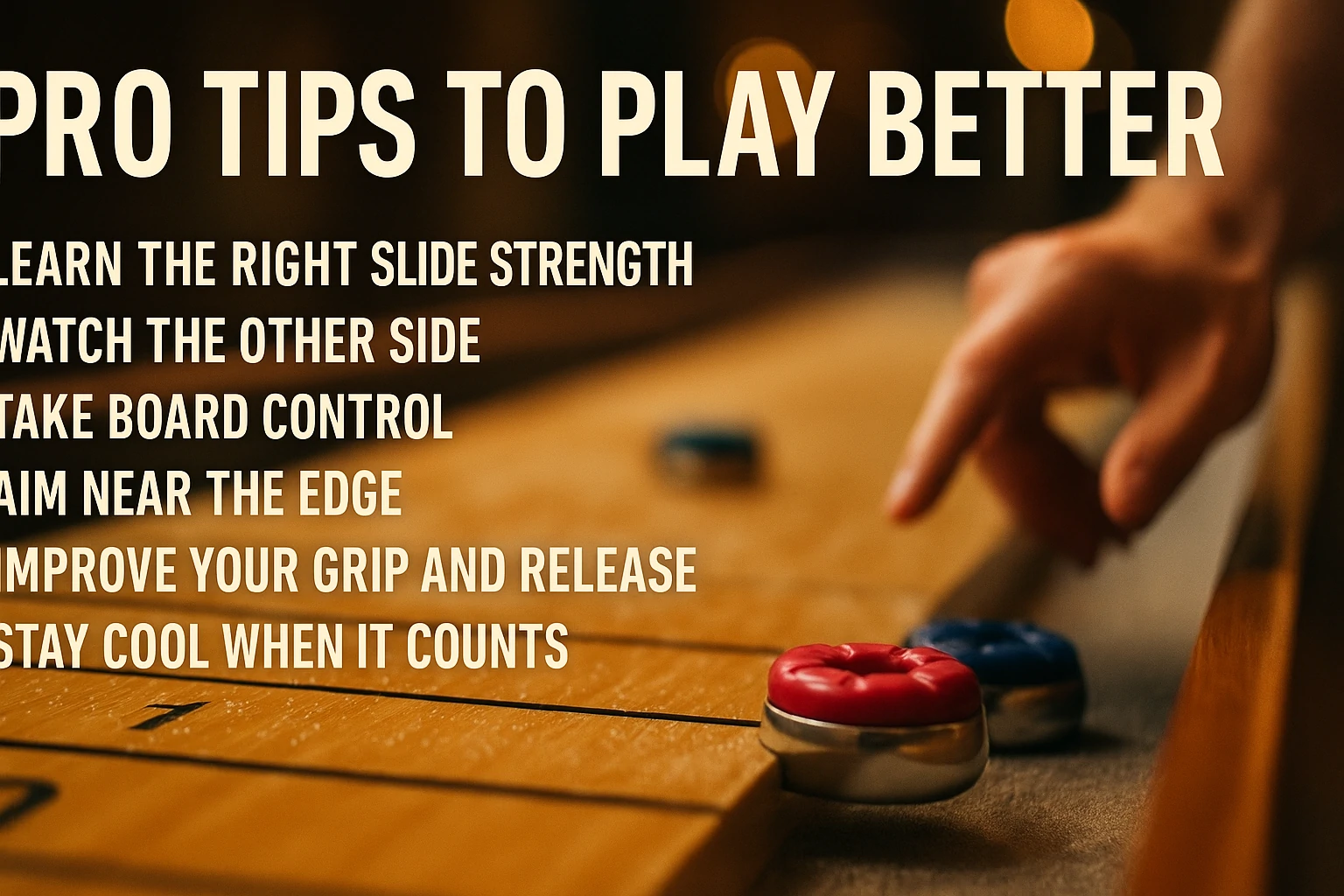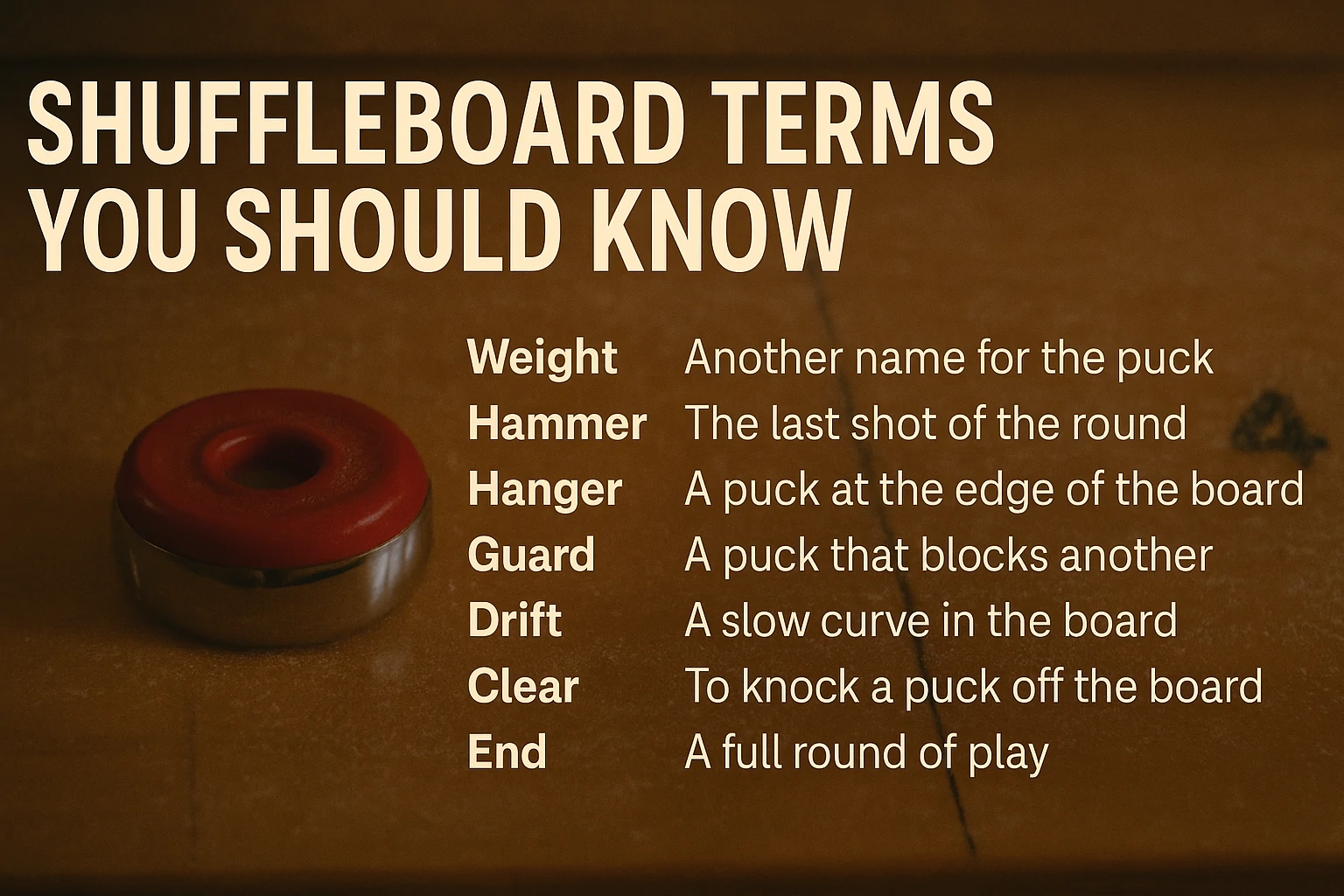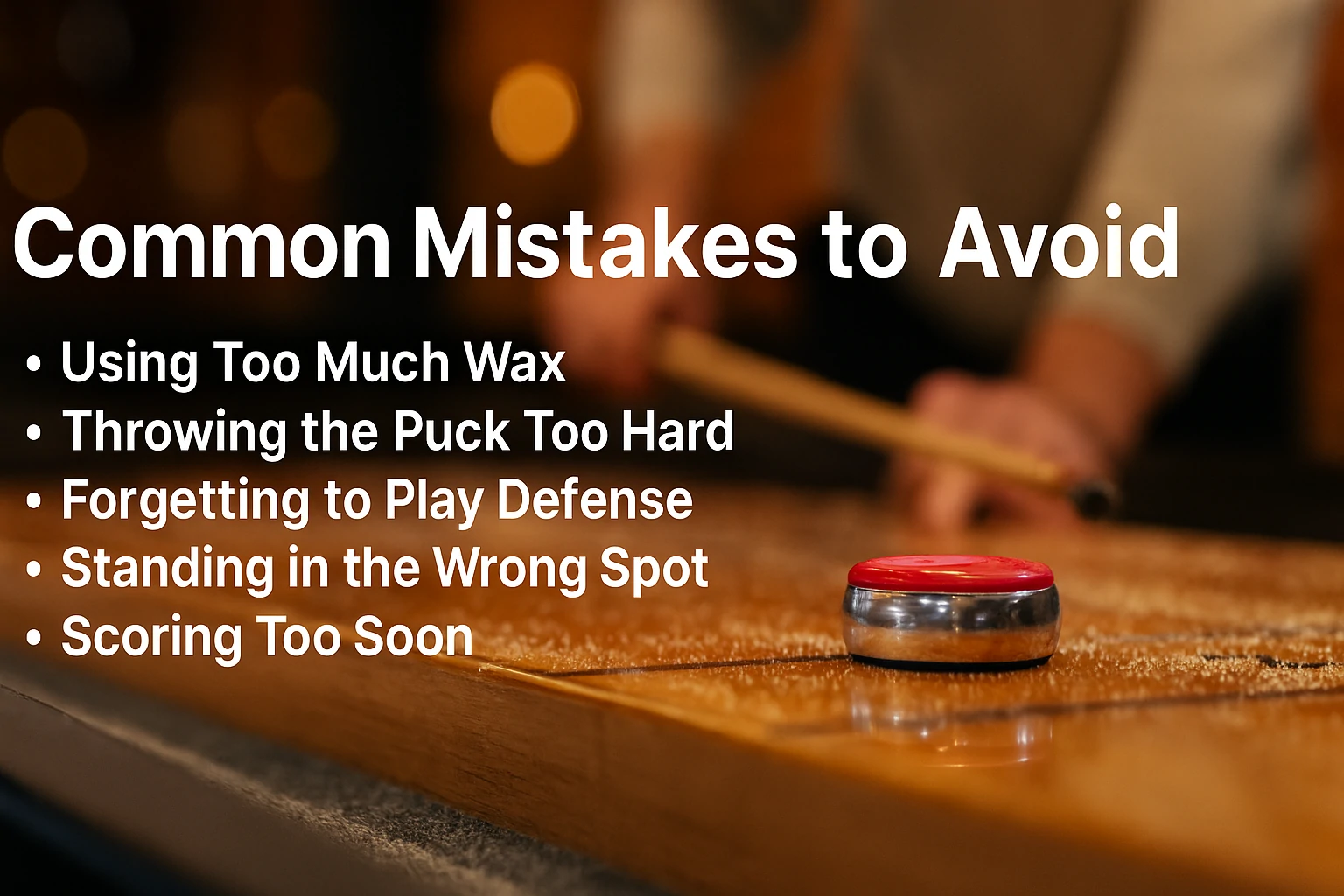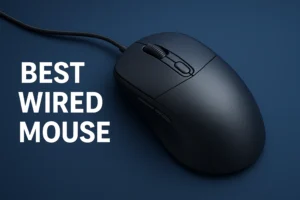Shuffleboard is more than a simple slide-and-score game. It brings skill, timing, and sharp focus into one smooth motion. Whether you play in a bar, on a cruise ship, or at home, the game always delivers fun. You do not need much to start. Just a table or court, a few pucks or discs, and a steady hand.
Many people try shuffleboard for fun but never learn the right way to play. Others think it is only for older players. That is not true. Shuffleboard fits all ages. It teaches aim, defense, and smart thinking. One strong move can win the round. One poor slide can open the door to a comeback.
This guide covers everything. You will learn the official rules, how to set up your gear, and how to keep score. It also includes game types, strategy tips, and answers to common questions. Whether you want to play better at home or compete in public, this guide gives you what you need.
Let’s get into the details. You will soon learn how to play shuffleboard like a pro.
What Is Shuffleboard?
Shuffleboard is a game where players slide pucks or discs toward marked zones. The goal is to land in a scoring area or knock out your opponent’s pieces. The closer your puck gets to the far edge without falling, the more points you earn.
There are two main versions of shuffleboard. The first is table shuffleboard. You see it in bars or game rooms. The second is floor or deck shuffleboard. This one is often played outdoors or on cruise decks. Both versions follow the same scoring idea but have different equipment.
Players can face off one-on-one or play as teams. You can play singles or doubles. Each round offers a chance to outscore your rival. The fun part? You can win points, block others, or knock them off the board.
Where Shuffleboard Came From
Shuffleboard has a long history. Some say it started in 15th-century England. People slid coins across long tables and marked scores with chalk. The game moved from castles to pubs over time. It later crossed the sea with travelers and sailors.
In the 1800s, cruise ships and clubs began to use floor courts. People called it deck shuffleboard. It became a quiet but popular game for groups. In the 1900s, Americans added table shuffleboard to bars. This version used small pucks and waxed tables.
Today, both versions still bring people together. Families play at home. Friends compete in bars. Seniors enjoy it in clubs. Shuffleboard has changed, but the goal stayed the same-slide, score, and win.
Shuffleboard works well for all ages. It gives families a fun way to bond through easy gameplay. If you enjoy light tabletop games, check out these roleplaying games that don’t need a Dungeon Master for more group fun.
Shuffleboard Equipment You Need
You do not need much to start playing shuffleboard. Just a few simple items can set up a full game. The type of gear you need depends on the version you play. Some people prefer table shuffleboard. Others choose the floor version. Both work well, but each one needs different tools.
Table Shuffleboard Setup
To play table shuffleboard, gather these key items:
- A shuffleboard table (usually between 9 and 22 feet long)
- Eight pucks (four in red, four in blue or black)
- Shuffleboard wax or powder
- A scoreboard (manual or digital works fine)
Pick a table that fits your space. Use powder to keep the puck moving smoothly. Without it, the surface feels sticky, and shots lose their glide. You can buy powder in small tubs or bottles. Spread it lightly before each game. A dry cloth helps you wipe off old wax.
Floor Shuffleboard Setup
Floor shuffleboard needs a bit more space, but the gear stays simple:
- A flat court or shuffleboard mat with zones clearly marked
- Eight discs (four of each color)
- Two long cue sticks (one per player)
- Chalk or tape (if you do not use a printed mat)
The court should be smooth and level. If you use chalk or tape to mark your zones, make sure the lines stay bold and easy to see. Replace them often. Each player uses a cue stick to push discs across the court. The discs must stay clean and free from dents or chips. Damage can ruin how they slide.
How to Choose the Right Shuffleboard Gear
Picking the right gear helps you enjoy the game more. You do not need the biggest table or the most costly set. You need gear that fits your space, your skill, and your goals.
Table Size:
A full-size table is 22 feet long. That works best for tournaments or large spaces. A 12–14 foot table fits most homes. Go smaller if you want casual play or space-saving fun.
Pucks:
Most sets come with 8 pucks-4 of each color. Choose heavy, smooth pucks with firm edges. They glide better and last longer. Use lighter pucks for kids or short tables.
Powder:
Fast powders make pucks slide far. Slow powders offer more control. Try both and see which fits your style. Keep the powder sealed tight when not in use.
Cue Sticks (Floor Game):
Choose sticks that feel light but strong. Shorter sticks give more control. Longer sticks give better reach. Pick one that matches your height and comfort.
Court or Mat:
If you play floor shuffleboard, use a mat with clear, bold markings. If you use tape or chalk, check that it sticks well and stays visible.
A smart gear choice makes the game smooth, fair, and fun for all players.
Keep Your Gear in Good Shape
Worn gear can ruin a good game. Always check your table or court before you play. Wipe it down with a soft cloth. Remove dust, crumbs, or any spills. Dirty surfaces block the glide and make your pucks veer off track.
Do not overuse powder. A thin layer is enough. Extra wax can cause the puck to slip too far or even fly off the table. Store your gear in a dry place. Avoid stacking heavy items on top of discs or cue sticks.
Clean pucks, smooth courts, and the right tools help every game run better. If you care for your setup, your shots will feel sharper. Good gear helps you score higher and play longer without issues.
How to Maintain Your Shuffleboard Table or Court
A clean table or court makes every shot smoother. Good care keeps your gear safe and your scores sharp. You do not need tools or special skills. Just stay consistent and smart.
Wipe the surface after each game. Use a soft, dry cloth. This removes dust, crumbs, and moisture. On tables, wax or powder can clump over time. A quick wipe keeps it even.
Use powder the right way. Do not pour too much. Sprinkle a light coat before each game. Store powder in a cool, dry place. Old powder may stick or feel damp.
Check your pucks and discs. Look for dents, chips, or worn edges. Replace broken ones early. Bad gear ruins good shots. Store pucks flat and clean.
Protect the table from sunlight and spills. Use a cover when not playing. Keep drinks off the surface. Wood can warp. Wax can melt. Water can stain.
Inspect your court lines. If you use chalk or tape, make sure zones stay clear. Reapply markings when they fade. A sharp court helps score right and play fair.
Routine care gives better glide, more fun, and longer life for your gear.
How to Set Up Shuffleboard
Table Shuffleboard Setup
Place your table on a level surface. Make sure there’s space around it to move freely. Spread a thin layer of shuffleboard powder across the surface. Do not use too much. Powder helps reduce friction and gives your pucks better glide.
Each player or team stands at opposite ends. Place all pucks on one side at the start of the round. Decide who goes first with a coin toss.
Floor Shuffleboard Setup
Lay down the court or mark one on the floor. Use chalk, paint, or a shuffleboard mat. The scoring zones form a triangle with point values. Players stand behind the baseline. Each player uses a cue stick to push the discs.
Make sure the surface is clean and safe. You want the discs to slide smoothly without bumps or cracks.
Shuffleboard Rules Explained
The rules are easy to learn and follow. The goal is simple: score more points than your opponent.
Game Start
Decide who goes first with a coin flip. The first player slides one puck toward the scoring area. The next player slides their puck. Players take turns until all 8 pucks or discs are played.
Turn Rules
Each player throws one puck at a time. The goal is to land in a scoring zone or knock other pucks out. You may hit your own pucks to gain better position. You may also try to block the scoring zones to protect your score.
Scoring Rules
Only one team scores per round. The team with the puck farthest down the board gets points. Any pucks behind the farthest scoring puck do not count.
If your puck hangs over the edge of the table without falling, that puck gets the most points. On a table, this move often wins the round.
If you play floor shuffleboard, the zones are worth 7, 8, or 10 points. A disc must be fully inside a zone to count. If it touches a line, it may not score.
Rounds continue until one team reaches the target score. Most games go to 15, 21, 50, or 100. You can also play “best of” formats.
How Shuffleboard Scoring Works
Scoring makes the game more than just sliding pucks. It adds pressure, strategy, and fun. If you learn how to score the right way, you can plan your shots and take control of the board. Let’s look at how both table and floor shuffleboard use points.
Table Shuffleboard Scoring
Shuffleboard tables usually have three scoring zones. These are painted or marked at one end of the board.
- Zone 1 (closest to you): 1 point
- Zone 2 (middle of the board): 2 points
- Zone 3 (farthest end): 3 points
- Puck hanging slightly over the edge: 4 points
Only one side scores each round. That means the team with the puck farthest down the board wins the points. The other team gets zero. You only count your pucks if they land beyond all of your opponent’s pucks.
Here’s an example. You land three pucks in zone 2. Your rival gets one puck in zone 1. Since all three of your pucks are farther, you get 6 points. But if their puck reaches zone 3, your pucks do not count.
A hanging puck gives the most points. It must stay balanced on the edge without falling. If it drops, it scores nothing.
Floor Shuffleboard Scoring
Floor shuffleboard has a different setup. The court shows a large triangle with three main zones.
- The tip of the triangle: 10 points
- Left and right wings: 8 points
- Bottom base area: 7 points
Some courts also add a penalty zone behind the triangle. It shows -10 points. If your disc lands there, your score drops. It’s a big risk, so avoid it when you can.
You must land the disc fully inside a zone. If it touches a line, it scores nothing. Some casual players still count those shots, but the real rules say no.
Use a chalkboard or phone app to keep track. Write down the score after every round. That way, you avoid mistakes or confusion.
Final Scoring Tip
Do not rush to score early. It helps to keep one puck back and play defense. Save your best shot for the end of the round. That move often makes the biggest difference.
Shuffleboard Variations and Game Modes
Shuffleboard has many fun twists. You do not need to follow just one rulebook. Many players enjoy switching styles to keep the game fresh. These versions test new skills and bring more energy to the game. Here are the most popular modes.
Knock Off
Knock Off is the most common shuffleboard version. It works on both tables and courts. Players take turns sliding their pucks to score. You must also knock your rival’s pucks out of high zones. Only the team with the puck farthest down the board earns points in that round. Others score nothing.
Games often go to 15 or 21 points. This mode teaches control and timing. A great shot can block your opponent. A soft slide can push your puck into a better zone. Smart players plan ahead. That’s why Knock Off stays a fan favorite.
Horse Collar
Horse Collar adds pressure. Each player aims to reach 51 points. You must score at least 26 points in one round to begin counting. That rule forces big plays. It adds risk and reward to every move.
Miss three full rounds in a row, and you lose the game. That rule keeps players focused. Horse Collar works best on longer tables. You need strong aim, smart defense, and sharp nerves to win.
Crazy Eight
Crazy Eight adds surprise to every round. You change rules each time. One round may double the points in zone 2. Another may ban edge shots or force backhand slides. Some games remove the hanging score or add bonus points for tricky spots.
This mode keeps players on edge. It stops you from using the same trick twice. Crazy Eight is fun with groups and great for parties. Just write the rule before each round and agree before play begins.
Shuffle Golf
Shuffle Golf mixes golf and shuffleboard. You mark target spots on the board or court. Each one has a “hole score,” just like real golf. The fewer rounds you need to hit each target, the better your rank.
Players go through a course of 9 or 18 “holes.” You try to land your puck in the right zone using as few tries as possible. Each missed shot adds to your score. The player with the lowest total at the end wins.
This version teaches patience and precision. It rewards soft hands and smart aiming. Shuffle Golf also adds a new purpose to every slide.
Like other casual games such as President (Asshole), shuffleboard has many versions that keep the game fresh and unpredictable.
Playing in Tournaments
Shuffleboard tournaments happen all over the world. These games follow set rules, gear sizes, and score limits. Players must stick to fair play and show control.
Most tournaments use a 22-foot table. Each side has four pucks. Players face off in rounds, often going to 15 or 21 points. One player gets the hammer each round-the last shot that often decides the winner.
Official rules say a puck must be fully in a zone to count. Line-touching shots score nothing. The referee checks each shot after the round ends. Only one player or team scores per round.
Some tournaments use brackets. Others use “round robin” formats. Players may compete solo or in teams. Some events offer cash prizes. Others just give trophies. No matter the prize, good sportsmanship and skill earn respect.
If you want to join a tournament, start small. Practice with others. Learn the full rules. Use a full-size table if you can. Tournaments test your patience and push your skill to the next level.
Pro Tips to Play Better
Shuffleboard rewards skill more than luck. Strong players think ahead and stay in control. A smart move beats raw power. These tips help you play with more purpose and win more games.
Learn the Right Slide Strength
A strong push can ruin a perfect shot. Use just enough force to reach the target zone. Aim for a smooth and steady slide. Too much speed sends your puck off the table or court. Test your strength before the game begins. Soft hands help you place the puck where you want.
Watch the Other Side
Your rival’s pucks show you where the danger lies. Focus on high-scoring pucks. Knock them out or block their next move. Study each shot. The more you learn about their style, the easier it gets to defend your lead.
Take Board Control
Use your first few pucks to take space. Place guards in front of the best zones. Block the path so your rival cannot reach it. If you go second, knock out guards or open lanes for yourself. A player who controls the board often controls the outcome.
Aim Near the Edge
Top players aim close to the edge of the table or court. These shots risk a fall but bring more points. A well-placed edge shot can score high and avoid other pucks. Use this move when you need a comeback or want to seal the round.
Improve Your Grip and Release
The way you hold and let go of the puck shapes its path. Hold it firm but loose enough to stay relaxed. Keep your wrist steady. Let the puck leave your hand in a straight line. Avoid flicks or twists. A clean release gives the puck better direction and speed.
Stay Cool When It Counts
A bad round does not mean the game is lost. Take a deep breath. Reset your focus. Many games turn around in the last two shots. Panic leads to mistakes. A calm player makes better choices. Trust your skills, follow your plan, and keep the pressure low.
Shuffleboard Terms You Should Know
Shuffleboard has its own words. These terms help you speak the game and understand each play. If you learn them, you will sound like a pro and follow each round with ease.
Weight
This is another name for the puck. Players often say “slide the weight” instead of “slide the puck.”
Hammer
This is the last shot of the round. The hammer gives you the final chance to change the score.
Hanger
A hanger sits at the very edge of the board. It does not fall off. It brings the highest possible score.
Guard
A guard is a puck placed in front of a zone or another puck. It blocks your rival from reaching or knocking out that spot.
Drift
Drift means a slow curve or tilt in the board. It can shift your puck left or right. Players learn to adjust their shots to match it.
Clear
To clear means to knock a puck off the board. It removes points and changes the round.
End
An end is one full round where both players or teams use all their pucks. Most games have many ends.
Lag
A lag shot helps decide who goes first. Each player slides one puck. The closest one to the edge wins the hammer.
Use these terms during games to build confidence and show skill. Clear words lead to sharp moves. When you talk like a player, you think like one too.
Common Mistakes to Avoid
Even good players slip up. A few small mistakes can ruin a solid game. If you know what to watch for, you can fix your play and avoid giving away points. These are the most common errors players make.
Using Too Much Wax
A thick layer of powder makes the puck slide too fast. It can shoot off the table before you control it. Always start with a light coat. Add more only if the surface feels dry. A small amount gives you better speed and cleaner aim.
Throwing the Puck Too Hard
Strong slides do not mean better shots. Fast throws often miss the zone or knock your own puck out. Practice short and smooth movements. Learn the feel of the table or court. Find the strength that gives you control, not chaos.
Forgetting to Play Defense
Most new players only aim to score. They do not protect their points or stop the other side. Use one puck to guard another. Knock out your rival’s high scorers. Keep your focus on the full board, not just your own shots.
Standing in the Wrong Spot
Your stance shapes your aim. If you stand too far or too close, your slide loses power or curves off path. Stay still. Keep your body balanced. Place your front foot firm and your back foot steady. A solid stance leads to smoother play.
Scoring Too Soon
It feels good to score early, but it can backfire. A rival can knock your puck out with their last shot. Wait until your final turn to go for the win. Use early pucks to test the surface or block zones. Save your best shot for when it counts most.
Shuffleboard for Kids and Families
Shuffleboard works well for all ages. Kids love it because it feels easy and fun. Parents love it because it teaches aim and focus. Use lighter pucks or shorter tables for young players. You can skip penalty zones to keep it simple.
Set small goals like first to 10. Praise good shots. Teach basic defense without pressure. Shuffleboard becomes a great way to bond and build skill.
Frequently Asked Questions
What is the best way to hold a shuffleboard puck?
A steady grip works best. Hold the puck with your fingers on the sides and your thumb on top. Keep your hand relaxed. A tight grip can make the puck tilt or veer off. Focus on balance and clean release.
How long is a standard shuffleboard table?
Most tables range from 9 to 22 feet in length. A 22-foot table is the official tournament size. Smaller tables still work well for home use. Choose one based on your space and skill level.
Can kids play shuffleboard?
Kids can enjoy shuffleboard with smaller gear and a shorter table or court. Lighter pucks help younger players learn faster. Shuffleboard builds aim, focus, and turn-taking. It makes a great family game.
What does the term “hammer” mean in shuffleboard?
The hammer is the last shot in a round. The player who holds the hammer gets the final move. That shot often decides who scores. Many players save their best effort for this moment.
How do you win a shuffleboard game?
A player or team wins by reaching the target score first. You can also win by having the most points after a set number of rounds. Smart plays, good defense, and steady aim help you get there faster.
Shuffleboard is not just about offense. Poor planning gives your rival the upper hand. To improve, study route-based thinking in games and learn how to map out better plays.
Conclusion
Shuffleboard is easy to learn and fun to master. It teaches focus, aim, and smart thinking. You can play it at home, in bars, or on cruise decks. It fits both casual players and serious ones. You do not need costly gear to start. Just bring your focus, your time, and the right mindset.
This guide gave you everything you need. You learned how to set up the board, play by the rules, and score points. You also picked up key terms and smart tips that help you win more rounds. Each part of the game offers a new skill to learn and enjoy.
Play with friends. Join a local game. Try a new version when the standard one feels easy. Every match gives you the chance to grow. Each slide brings its own test.
Stay sharp. Play smart. Win clean.
This guide is for informational purposes only and does not replace official game rules or tournament guidelines. Always follow safety instructions and manufacturer recommendations for your equipment.

